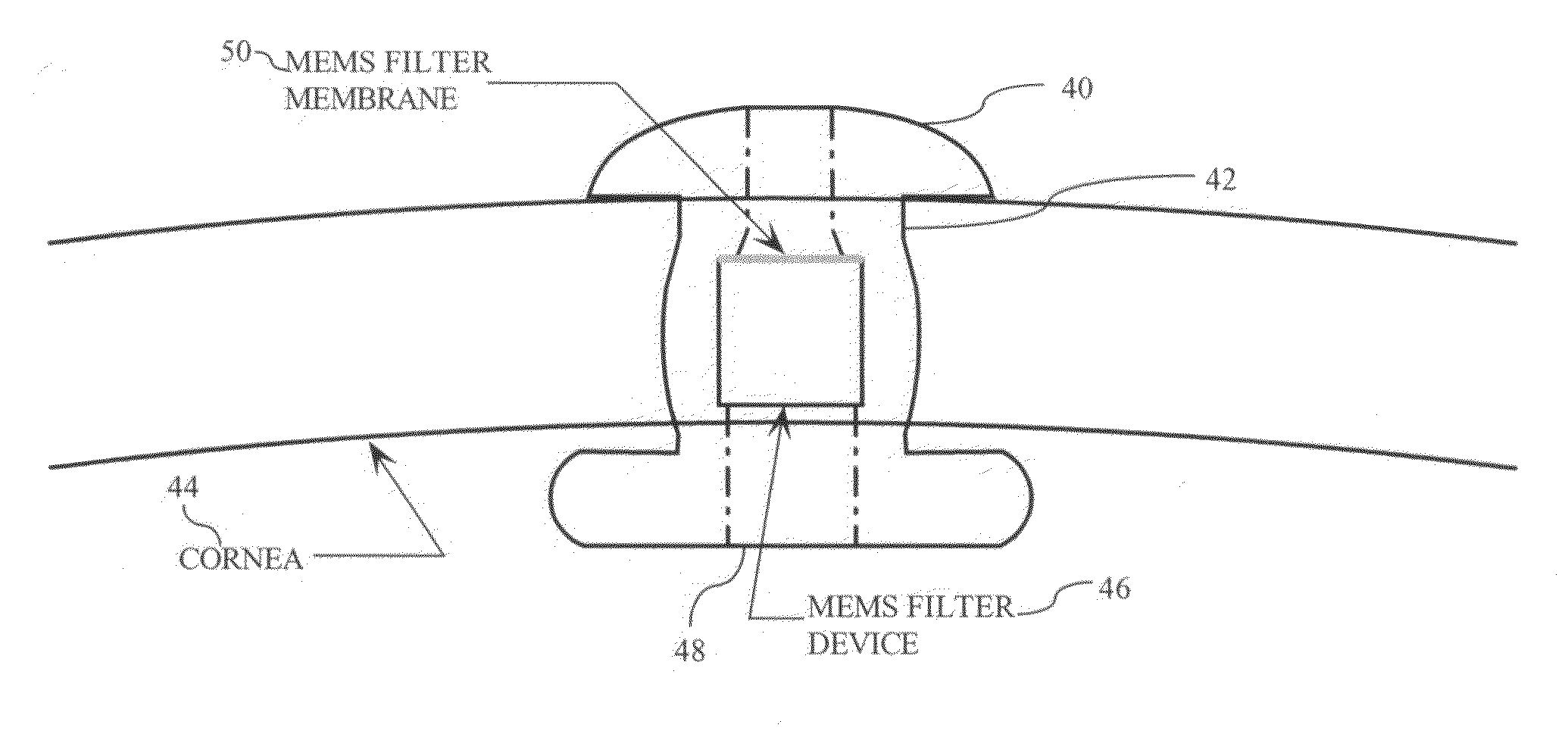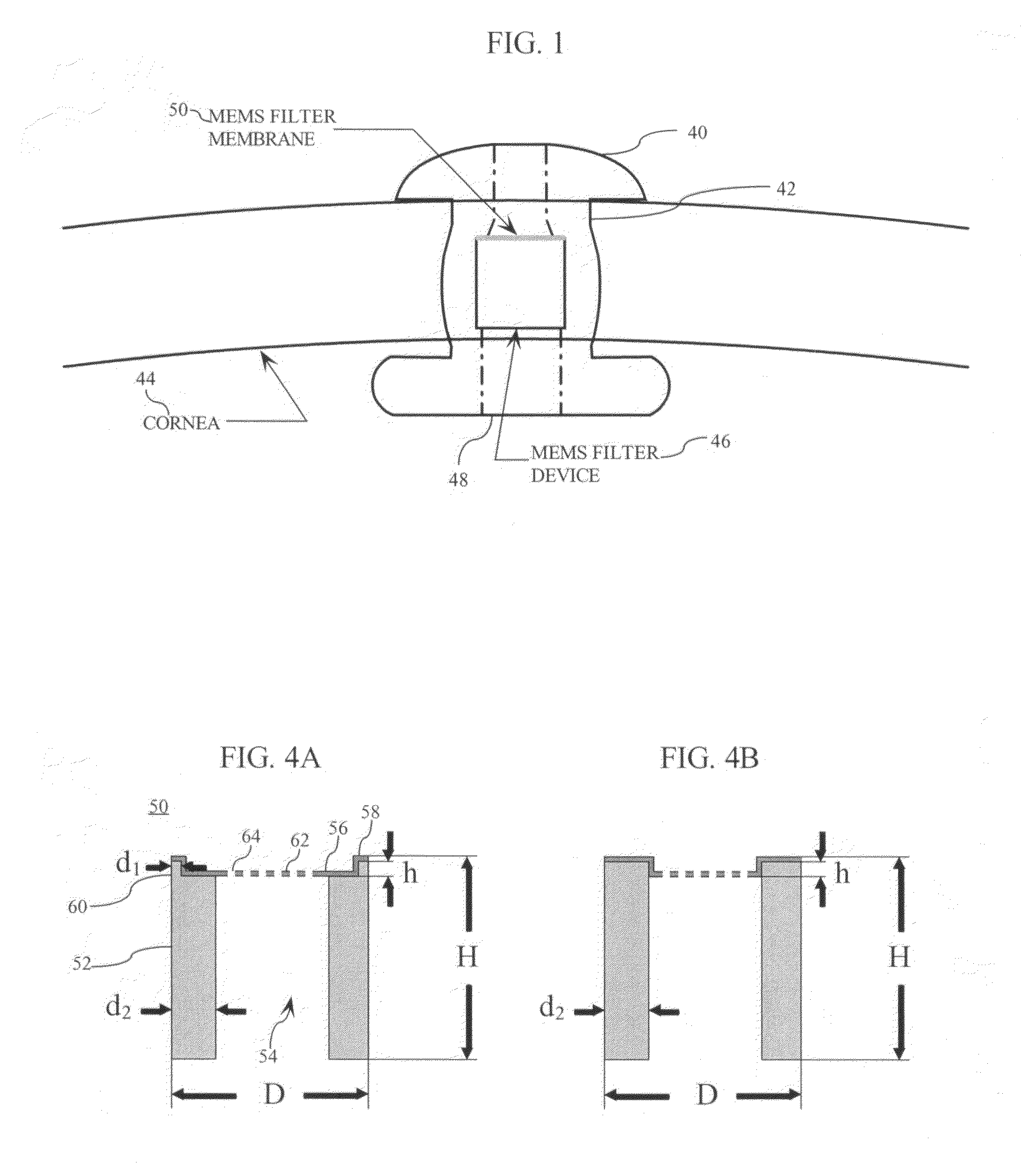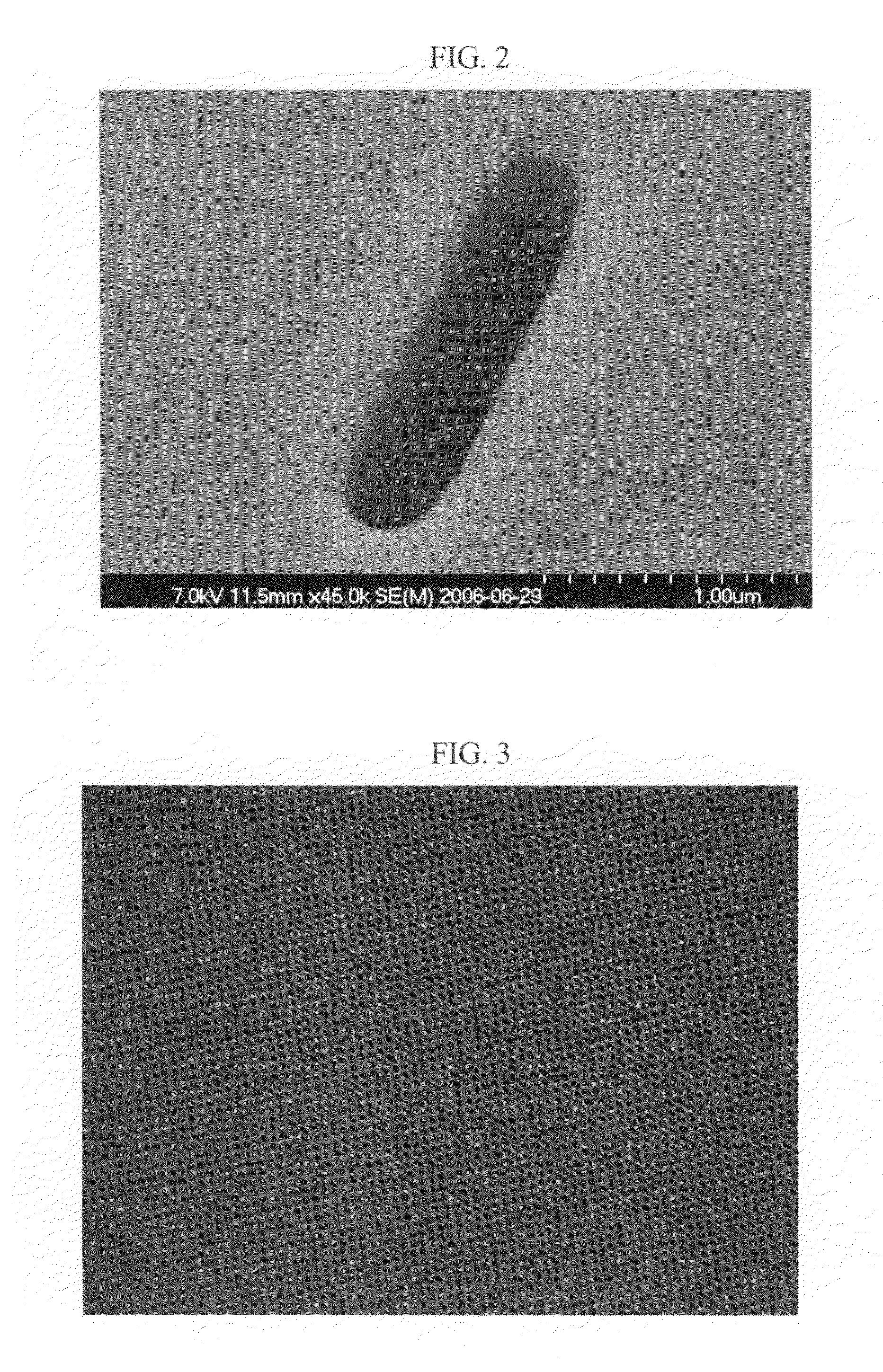Micromachined membrane filter device for a glaucoma implant and method for making the same
a filter device and micro-machine technology, applied in the field of medical devices, can solve the problems of high intraocular pressure of glaucoma, high labor intensity of surgeons, and failure of procedures, and achieve the effect of limiting the ingress of microorganisms
- Summary
- Abstract
- Description
- Claims
- Application Information
AI Technical Summary
Benefits of technology
Problems solved by technology
Method used
Image
Examples
Embodiment Construction
[0038]Reference will now be made in detail to embodiments of the present invention, examples of which are illustrated in the accompanying drawings, wherein like reference numerals refer to the like elements throughout.
[0039]FIG. 1 illustrates an example of a transcorneal shunt. FIG. 1 shows the shunt 40 inserted through an incision 42 in cornea 44. A Micro-Electro-Mechanical Systems (MEMS) filter device 46, disposed in a central passage 48 of the shunt 40, has a perforated membrane 50 to regulate aqueous humor outflow and limit ingress of microorganisms.
[0040]In some MEMS membrane filter devices, the thin membrane is fabricated to sit on top of a silicon support and is thereby exposed directly to potential damage during handling or assembly. Thus, the mechanical strength of such a membrane is a concern, since it lacks protection for handling or assembly.
[0041]Certain MEMS membrane filter devices may provide a limited flow rate, rendering them ineffective in connection with a glaucom...
PUM
 Login to View More
Login to View More Abstract
Description
Claims
Application Information
 Login to View More
Login to View More - R&D
- Intellectual Property
- Life Sciences
- Materials
- Tech Scout
- Unparalleled Data Quality
- Higher Quality Content
- 60% Fewer Hallucinations
Browse by: Latest US Patents, China's latest patents, Technical Efficacy Thesaurus, Application Domain, Technology Topic, Popular Technical Reports.
© 2025 PatSnap. All rights reserved.Legal|Privacy policy|Modern Slavery Act Transparency Statement|Sitemap|About US| Contact US: help@patsnap.com



